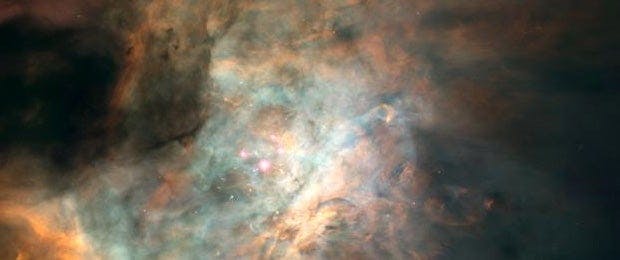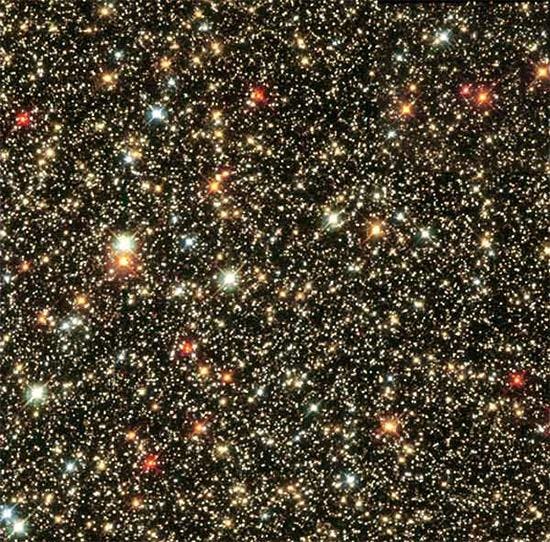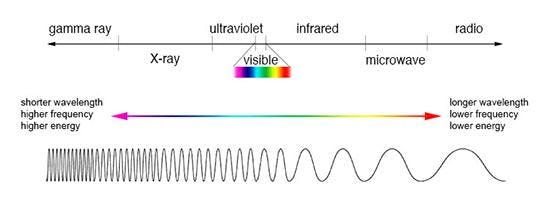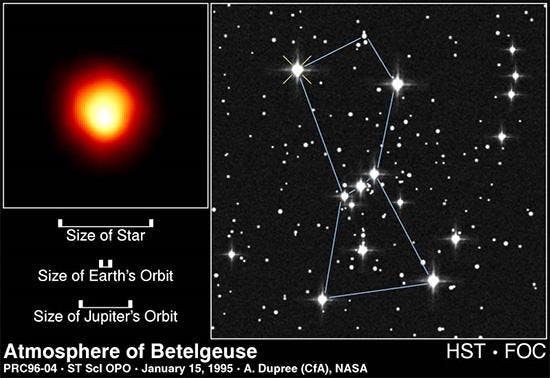Published May 19, 2015
White Dwarfs, Red Dwarfs, and Blue Giants, Oh My!
White Dwarfs, Red Dwarfs, and Blue Giants, Oh My!

White Dwarfs, Yellow Dwarfs, Red Dwarfs, Red Giants, and Blue Giants, oh my!As we look out from Earth along the disk of our Milky Way Galaxy, we see what looks like a pile of sparkly jewels, lots and lots of stars. Some are brighter, some are dimmer, and they come in all different colors, white, yellow, red, and blue. This begs the question… why do stars have different colors?

The color of an object emitting energy depends on the temperature of that object. You may have observed this phenomenon with a stove in your kitchen, or with a Bunsen burner in the lab. If you turn it up low, the flame is deep red; if you turn it up high it is blue-white. It turns out that there is a relationship between the color of radiation and the amount of energy it carries. Light is electromagnetic radiation; it has a range of wavelengths and frequencies. Red light has a longer wavelength and lower frequency than blue light, which means it carries less energy than blue light, so therefore it is cooler than blue light. You may recall seeing rainbows in the sky, the colors always having a particular order, red-orange-yellow-green-blue. The colors are sorted by the amount of energy they carry, with red having the least and blue having the most. The light is refracted by water droplets in the atmosphere, with high energy blue light being refracted the most, and low energy red light being refracted the least. But the spectrum of light actually extends far beyond the colors we can see. In the image below you can see how the various types of light are related by wavelength, frequency and energy.

Figure 2: The electromagnetic spectrum of light. Image Credit: NASA's Imagine the Universe.
So what does all of this have to do with stars? Stars generate their own energy via thermonuclear fusion in their cores. This energy travels via radiation and convection from the interior to the surface of the star where it is emitted in all directions. What color the star appears to us depends on the temperature of its surface. And that temperature depends on various factors, such as the stars’ masses, densities, and their stage of development.
Stars develop from clouds of gas and dust, such as the Orion Nebula or the Eagle Nebula. Many such clouds are all over the disk and arms of our Milky Way Galaxy as well as all other spiral galaxies. As the stars contract and mature, the nuclear fusion in their cores will start. This process all stars have in common. However, the stars that form in clusters in these clouds do not all have the same mass. Each cluster has a few really massive giants, many average stars, and lots of small stars. Once the stars are engaged in nuclear fusion, their mass and temperature are strongly related.

Figure 3: The Orion Nebula (a star forming region). Image Credit: NASA, C.R. O'Dell and S.K. Wong (Rice University).
The biggest stars are very hot, so they are called blue giants. An example of this is Rigel in the constellation of Orion. Rigel has been mentioned in Star Trek many times, among them in Star Trek IV: The Voyage Home as a monitoring station. Other blue giants we have encountered in Star Trek are Mintaka (TNG “Who Watches the Watchers”) and Alpha Eridani A (TOS “Wolf in the Fold”).
Our Sun, a mature star, has a surface temperature of 5800 Kelvin, which is why it is yellow. Being a small star it is called a yellow dwarf. Other yellow dwarfs we have encountered in Star Trek lore are the star surrounded by the Dyson sphere in TNG’s “Relics”, Ocampa’s primary star in the Delta Quadrant (VOY “Caretaker”), and the Calindra system in the Delphic Expanse (ENT “Proving Ground”).The smallest stars are very cool (as stars go), and therefore are called red dwarfs. An example of this is Wolf 359, the location of the epic battle with the Borg (TNG “The Best of Both Worlds”). Another red dwarf is 40 Eridani C, a star in a triple system also containing the primary star of Vulcan (40 Eridani A).
As the stars continue their thermonuclear fusion, converting Hydrogen into Helium and energy, eventually they will run out of Hydrogen in the core (much like your car will run out of gas). The fusion will stop, the core will collapse, and the outer gas envelope of the star will expand and cool off. Now the star is rather cool and much larger than before, so it is called a red giant. An example of this is Antares, which, aside from being the heart of the scorpion in the constellation of Scorpio, was the subject of a song Uhura sang in the rec-room (Beyond Antares, TOS “The Conscience of the King”, “The Changeling”).
As the more massive stars become red giants, they become monstrously large, earning them the label of red supergiant. An example of this is Betelgeuse in the constellation of Orion. It is so large, that despite its distance from us, the folks from the Hubble Space Telescope were able to measure its radius directly. In Star Trek, the Betelgeuse system was mentioned in ST: The Motion Picture as the home of the Betelgeusians.

Figure 4: Betelgeuse. Image Credit: A. Dupree (CfA), NASA.
Depending on their mass, the stars may go through the red giant stage more than once. In case of our Sun, the collapsing core will be massive enough to ignite the Helium and fuse it to carbon. When it eventually runs out of Helium to fuse, the core will collapse again, and our Sun will again become a red giant. But that will be the end of the road, as the core is not massive enough to keep fusing heavier elements. The outer gas layer will be expelled, creating a most beautiful object called a planetary nebula. Examples of this type of object are the Ring Nebula, the Helix Nebula, and the Cat’s Eye Nebula. The Enterprise NX-01 examined a planetary nebula, when they found a Vulcan survey ship spying on them (ENT “Breaking the Ice”).

Figure 5: NGC 5189 (planetary nebula). Image Credit: NASA, ESA, and the Hubble Heritage Team (STScI/AURA).
The leftover stellar core inside the planetary nebula is very hot and very small, and will therefore eventually become a white dwarf. This will be the ultimate fate of our Sun, in about 5 billion years or so. Examples of white dwarfs are Sirius B and 40 Eridani B. The latter is another one of the abovementioned triple star system, 40 Eridani A being the primary star of Vulcan. We have encountered white dwarfs in a few other places in Star Trek, for example the time when the SS Tsiolkovsky was observing the formation of a white dwarf where it ran into some trouble (TNG “The Naked Now”). The Enterprise also ran into trouble with a white dwarf in TNG “Emergence”.
This gives you a brief summary as to where the different types of stars come from. Our Federation (and other) starships encountered exotic objects besides stars in their travels, but these will have to wait for a future article.Here are a few links for you if you’d like to know more about this topic.STScI Press Release (A View Towards Sagittarius):http://hubblesite.org/newscenter/archive/releases/1998/28/image/d/STScI Press Release (Orion):http://hubblesite.org/newscenter/archive/releases/1995/45/STScI Press Release (Betelgeuse):http://hubblesite.org/newscenter/archive/releases/1996/04/Planetary Nebulae (Hubble Space Telescope):http://hubblesite.org/gallery/album/nebula/planetary/White Dwarfs (Hubble Space Telescope):http://hubblesite.org/newscenter/archive/releases/star/white-dwarf/2007/42/The Electromagnetic Spectrum:http://imagine.gsfc.nasa.gov/science/toolbox/emspectrum1.htmlMemory Alpha:http://en.memory-alpha.orgIf you are interested in hearing more about the latest discoveries in the physical sciences and technology in a fannish setting, come visit us at Shore Leave this coming August. This fan-run convention features over 12 hours of science programming, in addition of course to all the usual con activities. For more information please visit http://www.shore-leave.com.Inge Heyerwww.ingeheyer.com

